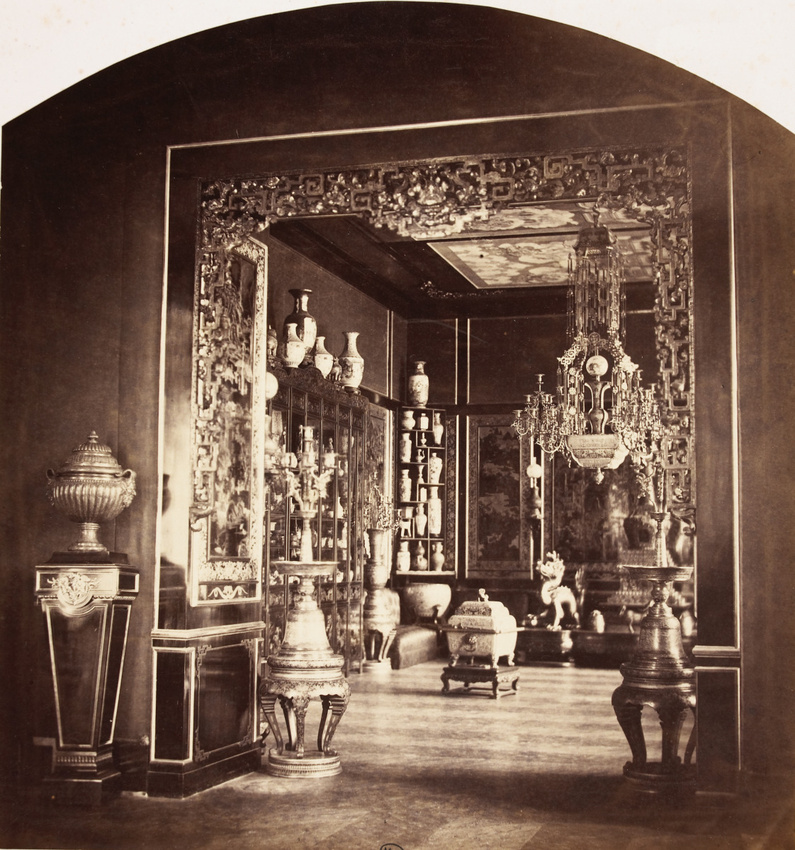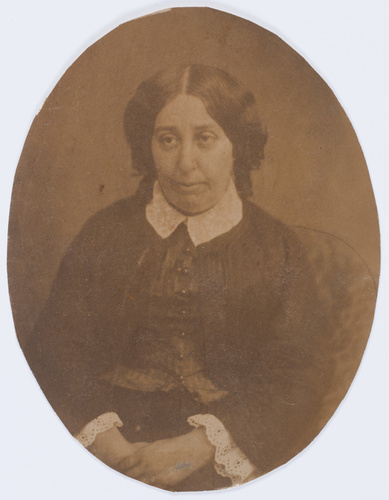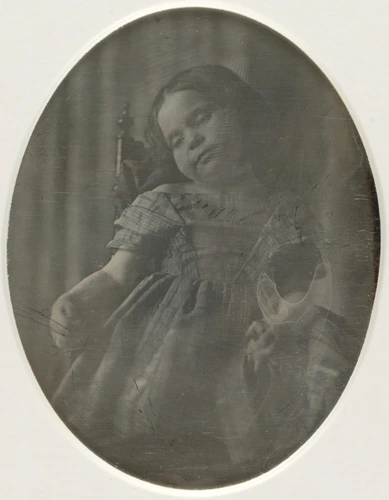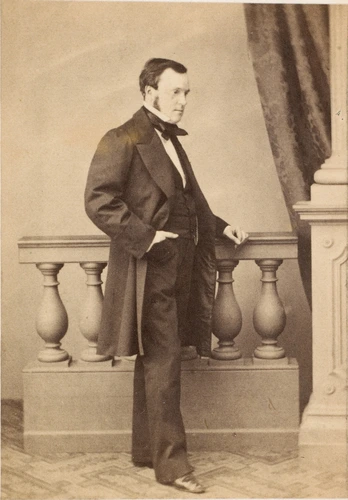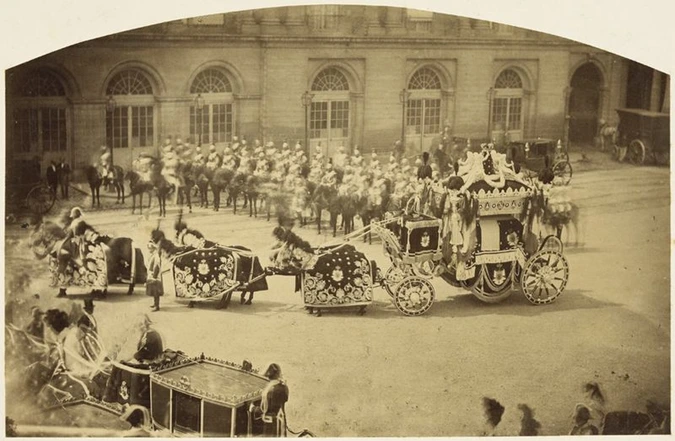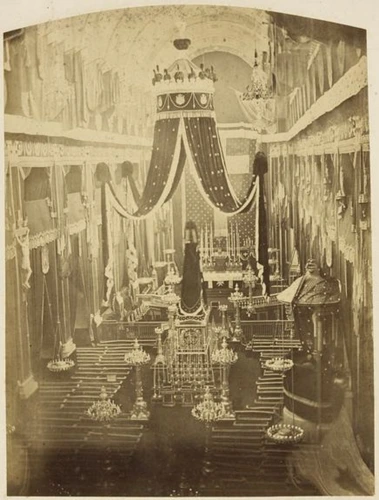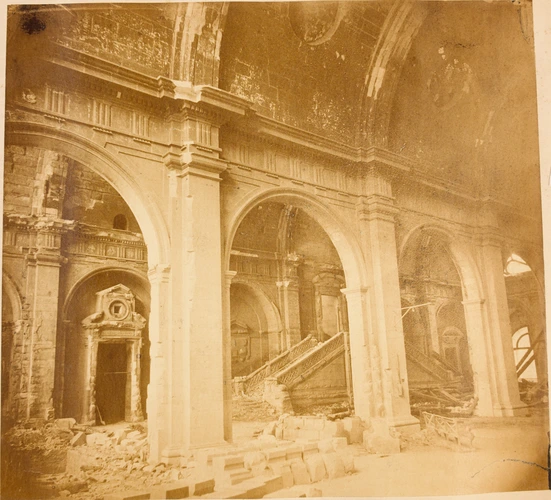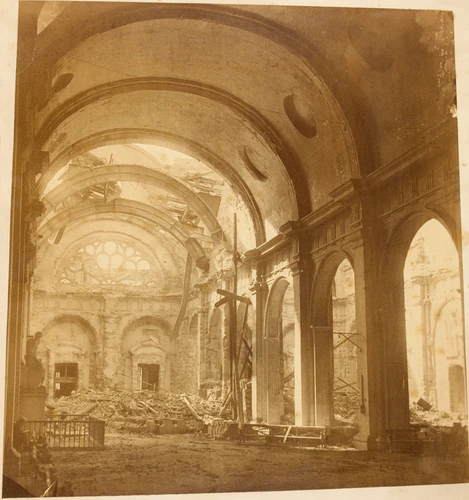Vue intérieure du pavillon chinois de l'impératrice à Fontainebleau, vue d'ensemble
In 1863, Empress Eugénie had four of the ground floor rooms at Fontainebleau redesigned. One of these rooms was intended to display the oriental objets d'art brought back from China after the Summer Palace was pillaged by French and British troops in 1860. When it came to sharing out the spoils "the army spontaneously expressed a wish that all the precious objects from the Imperial Palace should be sent as a gift to Her Majesty the Empress who had placed the Chinese expedition under her patronage, providing the necessary items for treating the sick and the wounded". The following year, in 1861, ambassadors from Siam, received at Fontainebleau, came laden with gifts for the French sovereigns, and these objects would complete the collection presented in the "Chinese Museum".
The photographs taken by Richebourg offer valuable evidence of the layout and museography of the location, referred to emotionally by Octave Feuillet, the librarian at Fontainebleau in correspondence with his wife. After a reorganisation, during which the original furniture was taken out and replaced with new glass cases, the museum was opened to the public until 1975. It underwent major restoration works between 1984 and 1991, when it was virtually restored to its original state.
